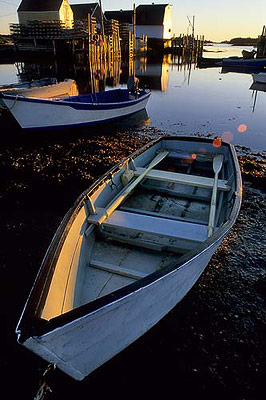
| |
|
Using a lens hood is like flossing your teeth. You know you should do it, but how many of us really do? (I have to floss; my wife is a dental hygienist). And just as flossing will improve the health of your teeth, regular use of a lens hood will improve the quality of your images.
The lens hood serves several purposes, the main one being shading the lens from direct light on a sunny day, thereby reducing or eliminating lens flare.
When direct light hits the front element of your lens, or any filters you may have attached, it can reflect back and forth inside the lens, creating lens flare. Flare can show up as a series of roughly circular shapes marching across the frame or it can be a large, hazy circle, or it can manifest itself as overall loss of contrast. Lens flare can be used creatively, but usually we want to eliminate it. The best way to do that is by using a lens hood.
The first step is finding your lens hood. I'm sure it's in your bag somewhere. Maybe it's in one of the side pockets... Don't tell me you left it in a closet back home?!?
Now that you know where your lens hood is (or you at least know it's somewhere in your camera bag), you have to remember to use it. Here's a good rule of thumb: if you're photographing - attach the lens hood.
A lot of photographers feel that if the sun is behind them, or if it's an overcast day, that there's no need for a lens hood. Sometimes that's true, but you'd be surprised at the number of situations in which you need to shade your lens.
Bright overcast days are a prime example. You don't have a bright source point of light to worry about; instead, you have a large bright diffused source of light to worry about. This kind of light will also cause lens flare, only it's the insidious kind of lens flare - the kind you can't easily see happening. It's the contrast reducing lens flare.
I'd be happily photographing a stream on a day such as this and, when I'd get the images back from the lab (film days), I'd see a misty haze at the top of the frame that I hadn't noticed while out in the field. I couldn't remember there being any fog in the trees, yet there it is. It didn't take me too long to figure out what was happening. Despite using a lens hood, bright light from that overcast sky still hit the front of my lens causing the loss of contrast that I saw in my images. This is especially problematic with wide angle lenses. Now, in situations like this, I'll add additional shading to the lens with my hand or a hat.
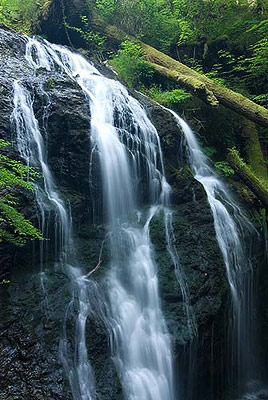 |
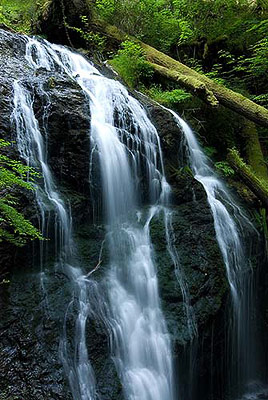 |
||
|
|
One way to tell if you're going to need additional shading is to look at the scene and shade your eyes. If things look better with your eyes shaded, they'll also look better with your lens shaded. You can also do this while looking through the viewfinder. Sometimes lens flare is easier to see if you push your depth of field preview button.
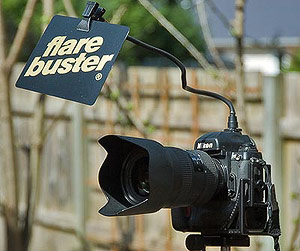
| |
|
There will be times when using a lens hood is impractical or impossible, like when using a rectangular graduated neutral density filter or if you use step-up rings for filters. Sometimes you need additional shading but you're using both hands for other things, like holding a reflector or a graduated neutral-density filter, or tripping the shutter. If you have a friend or shooting partner with you, have them stand so their shadow falls on the front of the lens (without them in the picture, of course) or use a product like The Flare Buster.
Besides improving image quality, using a lens hood has other benefits. For one, it can protect your lens. I can't count how many times I've bumped the lens hood against a boulder, my tripod leg, or some other hard surface. I don't use protective filters (they can increase lens flare problems) but I do use a lens hood while shooting. If I'm not actively shooting, I put the lens cap back on.
A lens hood also acts as an umbrella for your lens. To some extent it can keep rain drops or dust from landing on the front element. This is especially true for longer lenses, like an 80-200 zoom, that have deeper lens hoods.
So, start looking for situations where lens flare can hurt you. Remember, there doesn't have to be a direct light source for lens flare to manifest itself. Be especially wary of it on overcast days - that's when you'd least expect it. Also realize that sometimes your lens hood won't be enough and you'll need to use additional shading.
Oh, and stop treating your lens hood like that annoying little brother you just want to ditch. Think of it as part of your lens and an integral part of overall photographic quality.
RB-NPN 0933
Comments on NPN nature instructional photography articles? Send them to the editor.
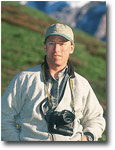 Rod Barbee is a professional photographer, writer, and instructor. He is a regular contributor to Outdoor Photographer magazine and has also been published in Nature's Best magazine,
Rod Barbee is a professional photographer, writer, and instructor. He is a regular contributor to Outdoor Photographer magazine and has also been published in Nature's Best magazine,
Rod has taught nature photography through Bellevue Community College in Washington state, The Mountaineers in Seattle, Olympic College in Bremerton, WA, The Great American Photography Weekend workshops, and Olympic Mountain School of Photography. He is also a contributing editor to Naturephotographers.net, an online photography magazine.
The natural beauty discovered during backpacking trips into Olympic National Park led him to nature photography. It's since become a passion in his life from which he continues to learn and grow.
Rod and his wife Tracy Rowley live in Port Ludlow on Washington's Olympic peninsula.